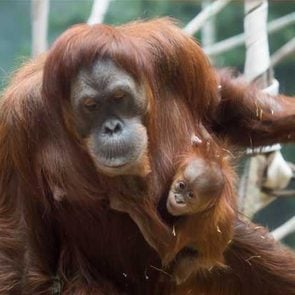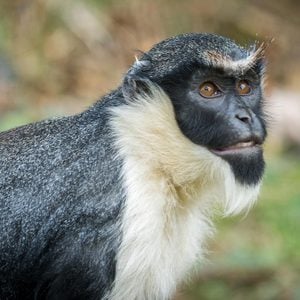How a Tiny Island Saved an Entire Species From Extinction
Updated: Jun. 24, 2022
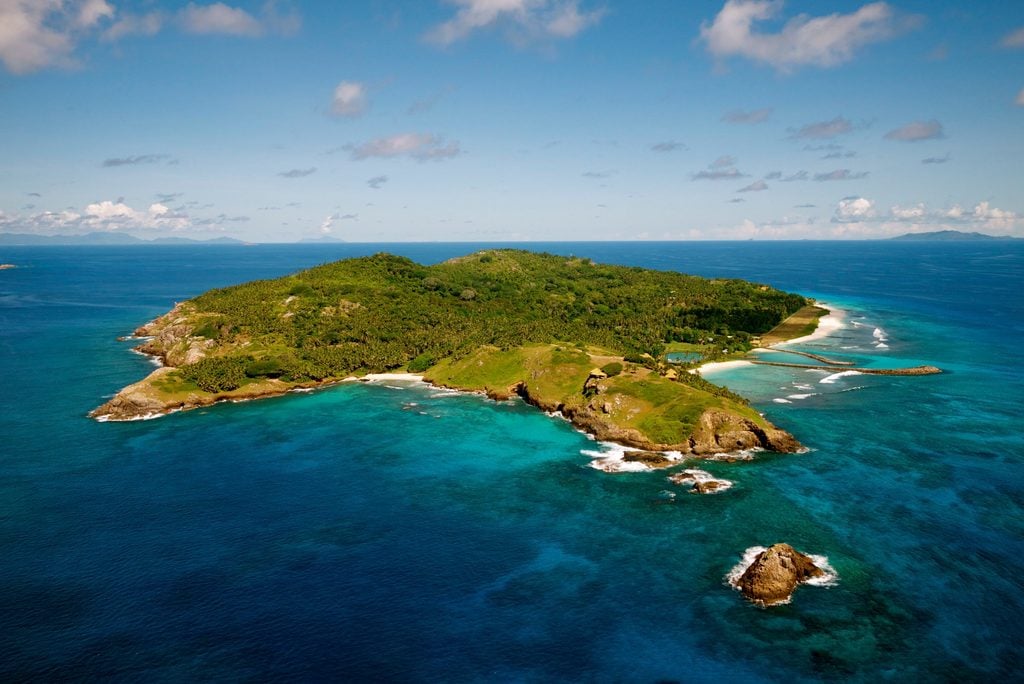
The Seychelles magpie robin was nearly extinct, with just 12 birds remaining on one small island in the middle of the Indian Ocean. Then something remarkable happened: The 500-acre island found a way to save them.
There are few birds, mammals, or even pets with the relatable personality of the magpie. Known for their inquisitiveness, they often mimic sounds, trying to imitate human words, dogs barking, or trucks and machinery. One magpie in Australia was recently filmed imitating a firetruck! The birds often practice a bit of light thievery to gather objects that catch their eye (one recently made a nest out of stolen hangers), and they are the only birds, not to mention non-mammals, that can recognize themselves in mirrors. They’ve even been known to use tools (really) and play games.
The black-and-white winged birds are so familiar and friendly, it’s hard to imagine them disappearing from the earth, like these animals that have gone extinct in the last 100 years. But that’s exactly what was about to happen to one subspecies, the Seychelles magpie robin, which was only found on tiny Fregate Island in the Indian Ocean.
A scary scenario
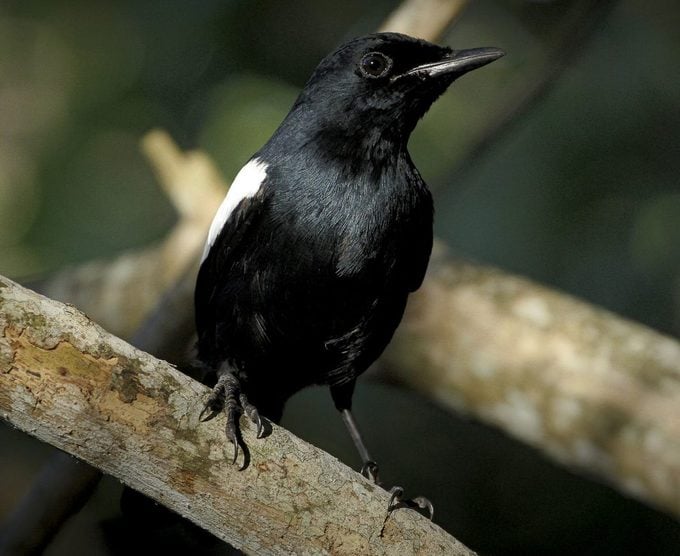 The Seychelles magpie robin (or SMR for short) lived only on Fregate Island, a 500-acre granite island (about two-thirds the size of New York City’s Central Park) in the tropical island nation of the Seychelles, off the coast of Africa in the Indian Ocean. In the second half of the last century, trees and plants were razed for farming and development, pushing the birds out of their natural habitat, while at the same time, cats and rats were suddenly introduced to the island, creating a perfect storm of bird dangers. The tsunami of threats came to a head in the mid-1960s, according to Bird Conservation International, when the SMR became critically endangered and just 12 birds remained in the world.
The Seychelles magpie robin (or SMR for short) lived only on Fregate Island, a 500-acre granite island (about two-thirds the size of New York City’s Central Park) in the tropical island nation of the Seychelles, off the coast of Africa in the Indian Ocean. In the second half of the last century, trees and plants were razed for farming and development, pushing the birds out of their natural habitat, while at the same time, cats and rats were suddenly introduced to the island, creating a perfect storm of bird dangers. The tsunami of threats came to a head in the mid-1960s, according to Bird Conservation International, when the SMR became critically endangered and just 12 birds remained in the world.
Where in the world is Fregate Island?
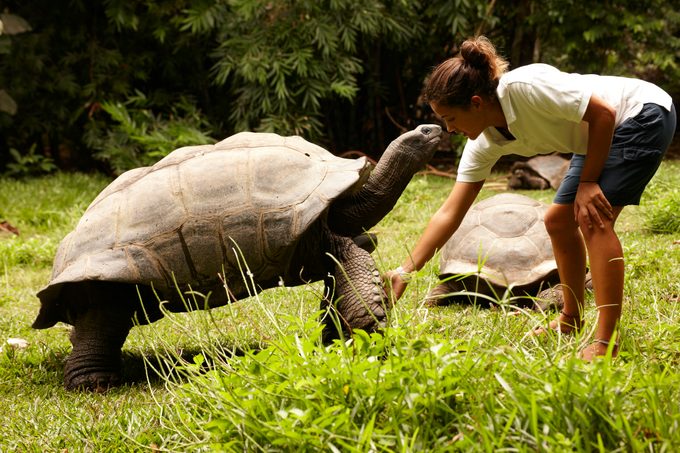 Fregate Island is “part tropical paradise, part wild isle,” according to National Geographic, “a place where brochure-worthy beaches are inhabited by creatures seemingly plucked from the Galápagos.” It’s part of the Seychelles, an archipelago of 115 small islands.
Fregate Island is “part tropical paradise, part wild isle,” according to National Geographic, “a place where brochure-worthy beaches are inhabited by creatures seemingly plucked from the Galápagos.” It’s part of the Seychelles, an archipelago of 115 small islands.
Fregate is truly a natural paradise, with white sand, turquoise water, swaying palms, and a cornucopia of endemic wildlife unique to its surroundings and not found anywhere else in the world. National Geographic reports, “the wildlife here illustrates the power and wonder of what evolution can do in isolation. The beaches are some of the only in the world where sea turtles nest during daylight hours; thousands of rare and endemic tropical birds flit through the trees,” and one of the few places “where giant tortoises roam free.” It sounds like it would be all bird bliss, but that wasn’t the case for the SMR.
Sounding the alarm
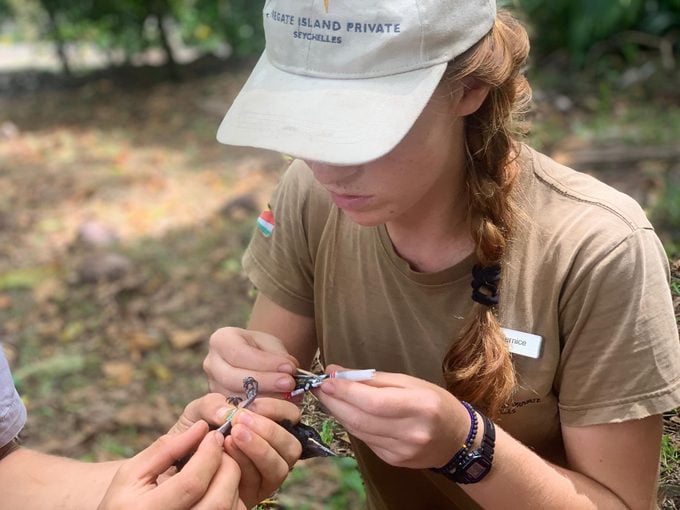 From 1965 to 1990, the SMR held on by their tiny claws, with total numbers reaching up into the 20s but not much higher, while the island tried to figure out how to help them. In 1990, Fregate was finally successful in reaching out to the world, and conservationists started to focus their attention on saving this intelligent bird, with BirdLife International starting preservation efforts to save the magpie robin. First, the island worked to remove predators from nesting areas, and other threats such as pesticides were slowly removed from the island. Then, in the late 1990s, a private investor offered to work with the Seychelles government to turn the island into a conservation-minded retreat. It was the first time a high-end-leisure model was used to bring money, jobs, and, most importantly, conservation resources to an island in the Seychelles. Suddenly, SMR were front and center on the conservation front lines, with the resources to help them.
From 1965 to 1990, the SMR held on by their tiny claws, with total numbers reaching up into the 20s but not much higher, while the island tried to figure out how to help them. In 1990, Fregate was finally successful in reaching out to the world, and conservationists started to focus their attention on saving this intelligent bird, with BirdLife International starting preservation efforts to save the magpie robin. First, the island worked to remove predators from nesting areas, and other threats such as pesticides were slowly removed from the island. Then, in the late 1990s, a private investor offered to work with the Seychelles government to turn the island into a conservation-minded retreat. It was the first time a high-end-leisure model was used to bring money, jobs, and, most importantly, conservation resources to an island in the Seychelles. Suddenly, SMR were front and center on the conservation front lines, with the resources to help them.
Here are another 14 wild animal species you never knew were endangered.
Conservation efforts
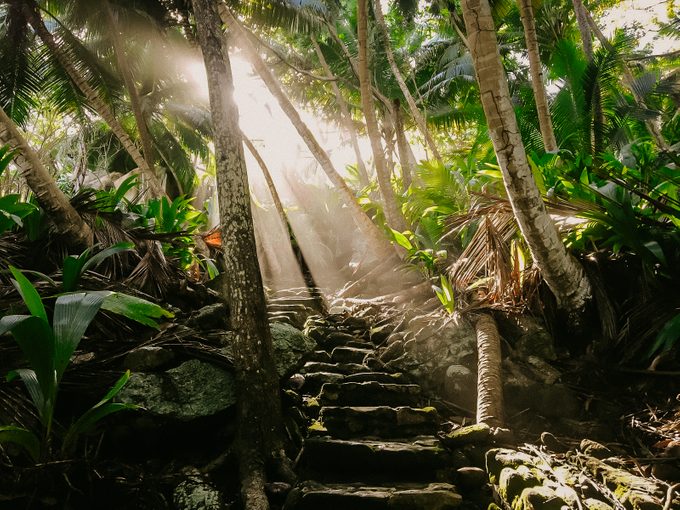 In 1994, following the removal of the feral cats, a recovery program was initiated. It involved habitat creation, supplementary feeding, and nest defense, as well as creating nest boxes, controlling introduced species, and relocating birds to other islands. Fregate Island helped the SMR by building wood birdhouses and raising them well off the ground, a change from the birds’ usual nests in tall grass, which had easily given predators access. Finally, all SMR were banded (small colored bands were placed around their legs) to note their attributes and make tracking them easier for research and safety.
In 1994, following the removal of the feral cats, a recovery program was initiated. It involved habitat creation, supplementary feeding, and nest defense, as well as creating nest boxes, controlling introduced species, and relocating birds to other islands. Fregate Island helped the SMR by building wood birdhouses and raising them well off the ground, a change from the birds’ usual nests in tall grass, which had easily given predators access. Finally, all SMR were banded (small colored bands were placed around their legs) to note their attributes and make tracking them easier for research and safety.
Success!
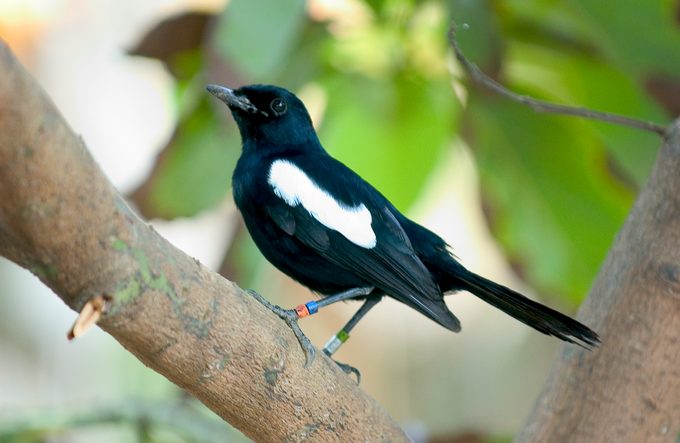 Through these concentrated efforts, there are nearly 200 SMR on the island today, and more have been relocated to other safe-haven islands nearby so that the entire population isn’t exposed in one location. They are no longer considered “critically endangered,” although they are still on the “endangered” watch list.
Through these concentrated efforts, there are nearly 200 SMR on the island today, and more have been relocated to other safe-haven islands nearby so that the entire population isn’t exposed in one location. They are no longer considered “critically endangered,” although they are still on the “endangered” watch list.
Currently, the project is overseen by Anna Zora, Fregate Island’s deputy conservation and sustainability manager, and the nests are constantly monitored by a conservation team and volunteers. Despite the hardships they’ve been through, says Zora, the SMR “are very human-friendly, and still very curious. When we walk in the forest, we have that feeling of being observed, and every time we check, it’s them—the SMR. They observe us in everything we do.” Check out these other incredible tales of animals that came back from the brink of extinction.
See the SMR in person
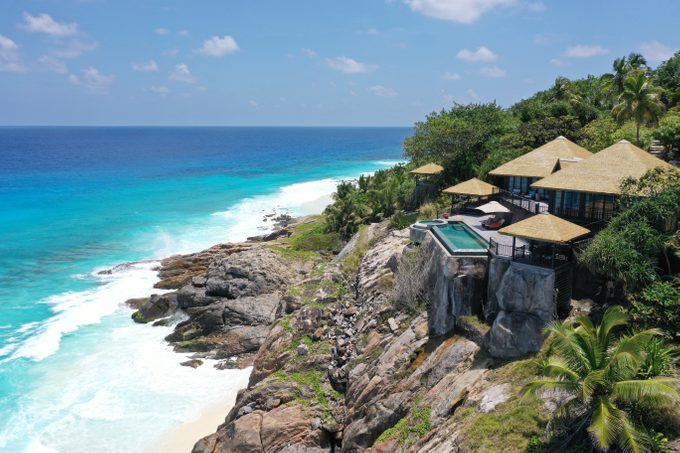
Since the SMR are so friendly and curious, if you visit Fregate Island, you’ll be certain to hear their chatter, glimpse them building nests, and possibly even see one up close. The island’s private resort holds just 16 villas, each with a private infinity pool, Jacuzzi, and outdoor dining pavilion, as well as the Banyan Hill Estate, comprised of three villas.
But the best part of staying here is actively taking part in the “living laboratory” of Fregate Island preservation and conservation. Guests can participate in activities ranging from planting an endemic tree sapling to helping ensure that sea turtle eggs hatch successfully. Best of all, even if you’re just enjoying Fregate’s beautiful beaches, a portion of all lodge proceeds are used to support ecosystem regeneration, which, in turn, helps the Seychelles magpie robin. It’s truly the perfect conservation vacation.

